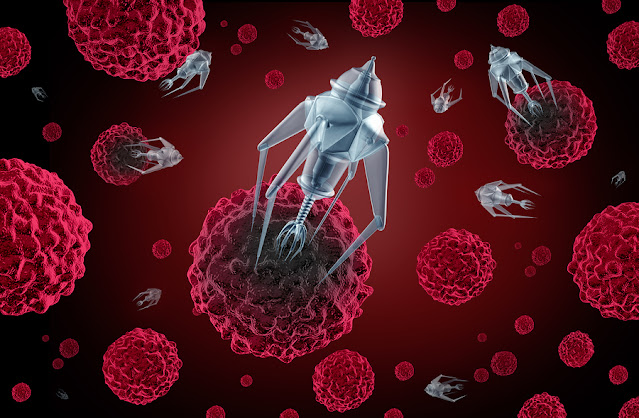Fecal Calprotectin Test: Understanding This Non-Invasive Test for Inflammatory Bowel Disease
 |
| Fecal Calprotectin Test |
What is Calprotectin?
Calprotectin is a protein that is mainly found within the neutrophils (a type
of white blood cell) in our bodies. During inflammation in the intestines,
there is an increased migration of neutrophils to the inflamed intestinal
tissue. As the neutrophils gather in the intestine, they release calprotectin
into the intestinal lumen. Therefore, detecting elevated levels of calprotectin
in the stool can be indicative of intestinal inflammation.
How is the Test Done?
The Fecal
Calprotectin Test is a non-invasive diagnostic test used to detect
elevated levels of calprotectin in stool samples. To perform the test, patients
are provided with a collection kit that contains a stool collection container
and instructions. Patients simply collect a small sample of stool and return it
for laboratory analysis. No special preparation or diet is required before
collecting the stool sample. Once received at the lab, the stool sample
undergoes quantitative analysis for calprotectin levels using specialized
immunoassays.
What are Normal Calprotectin Levels?
Normally, calprotectin levels in stool samples are very low, usually below 50
micrograms per gram of stool (μg/g). Levels above 50 μg/g may indicate
intestinal inflammation. However, levels can vary depending on the laboratory
performing the test. It's best to check the reference range provided by your
specific lab.
What Conditions can Cause Elevated Calprotectin Levels?
As calprotectin is released by neutrophils during intestinal inflammation,
elevated levels commonly indicate underlying inflammatory bowel diseases like
Crohn's disease or ulcerative colitis. However, elevated calprotectin may also
be seen in other gastrointestinal conditions that cause intestinal
inflammation, such as:
- Infectious gastroenteritis: Bacterial or viral infections in the stomach or
intestine like Clostridium difficile infection can temporarily elevate levels.
- Non-steroidal anti-inflammatory drug (NSAID) enteropathy: Long-term use of
NSAIDs like ibuprofen can damages the intestinal lining and increase
inflammation.
- Radiation enteritis: Inflammation of the intestine caused by previous
radiation therapy to the abdominal or pelvic regions.
- Ischemic colitis: Decreased blood flow to areas of the large intestine
causing injury and inflammation.
- Intestinal tuberculosis: Infection of the intestine with Mycobacterium
tuberculosis bacteria.
Therefore, an elevated calprotectin result should be further evaluated to
determine the underlying cause or confirm a diagnosis of inflammatory bowel
disease.
When is the Test Used?
The fecal calprotectin test has many clinical applications:
- Distinguishing between irritable bowel syndrome (IBS) and inflammatory bowel
disease (IBD): Irritable bowel syndrome does not cause intestinal inflammation
so calprotectin would be expected to be normal. Elevated calprotectin supports
the presence of IBD.
- Monitoring disease activity in known IBD: Serial calprotectin testing can
help assess response to treatment and detect disease flares before clinical
symptoms arise.
- Post-surgical recurrence monitoring in IBD: Used to detect subclinical
recurrence after surgery when clinical symptoms have not yet returned.
- Differential diagnosis of chronic diarrhea: Helps distinguish between
infectious causes versus non-infectious inflammation like IBD.
- Guiding additional diagnostic testing: Such as lower endoscopy when
calprotectin is elevated to evaluate for suspected IBD.
- Predicting clinical relapse risk in quiescent IBD: Higher calprotectin levels
predict a higher risk of relapse within 3 months.
the fecal calprotectin test provides a simple, non-invasive means
for detecting intestinal inflammation. It aids in distinguishing IBS from IBD,
monitoring disease activity, and guiding further evaluation and management.
Serial testing is also useful for monitoring treatment response and detecting
flares early.
What are the Limitations of Calprotectin Testing?
While the fecal calprotectin test is useful, there are some limitations to
consider:
- Transient elevations: As mentioned before, calprotectin can temporarily
elevate with infections and thus may not always indicate chronic intestinal
inflammation.
- Diet effects: Heavy consumption of meat within the past 24 hours may cause a
slight elevation due to normal calprotectin levels in meat.
- Sample quality: The stool sample needs to be collected, stored, and
transported correctly. Contamination or delays can affect results quality.
- Other biomarkers: Although elevated calprotectin is supportive of IBD, bowel
damage and inflammation involve multiple biomarkers. Calprotectin alone cannot
make a definitive diagnosis.
- False positives and negatives: Like any test, there is a small chance of
false results due to technical or specimen issues. Clinical correlation is
important.
- Lack of specificity: An elevated result merely indicates intestinal
inflammation but does not determine the specific diagnosis or disease location.
So in summary, an elevated calprotectin provides useful information but should
not be the sole basis for diagnosing or managing IBD. The test works best when
combined with a full clinical evaluation, medical history, endoscopic
assessment, and other lab markers.
the fecal calprotectin test is a valuable, non-invasive tool for
gastroenterologists that aids in evaluating intestinal inflammation and guiding
management decisions. By detecting neutrophil migration into the intestine, it
helps differentiate IBS from IBD, monitors treatment responses, and detects
subclinical relapse.
Get more insights on – Fecal Calprotectin Test
About Author:
Ravina Pandya, Content Writer, has a strong foothold in the market research
industry. She specializes in writing well-researched articles from different
industries, including food and beverages, information and technology,
healthcare, chemical and materials, etc. (https://www.linkedin.com/in/ravina-pandya-1a3984191)



Comments
Post a Comment